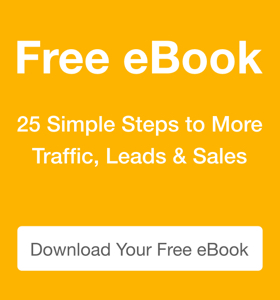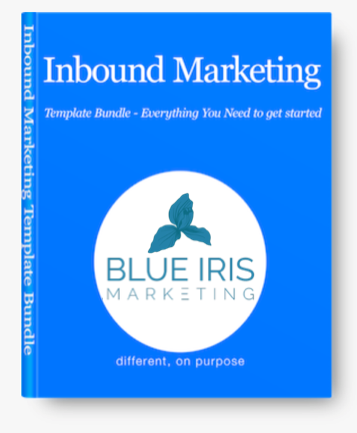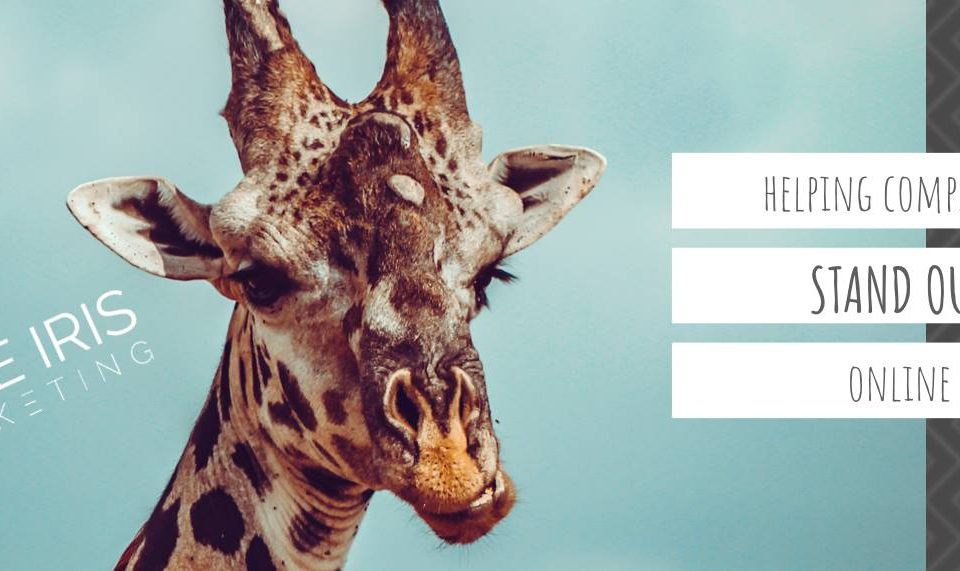How to Create Inbound Campaigns that Convert

What is inbound marketing
November 18, 2016
How to Attract More Targeted Traffic
December 16, 2016Once you understand how it all works, creating content and campaigns that convert isn’t as mysterious as it might seem. It all starts with a well-researched, accurate Buyer’s Persona (download our detailed Buyer Persona guide and template). We’ve written some pretty comprehensive articles on how to create Buyer Personas that set your campaign up for great success.
- How to Create Detailed Buyer Personas – Part I
- Buyer Personas – How to Improve Your Campaigns – Part II
- Using Buyer Personas to Create Successful Campaigns – Part III
The next step in developing your inbound marketing strategy is to begin mapping out your content. Creating your Buyer’s Journey for each Buyer’s Persona will help you write conversion-centered content. Our detailed buyer’s journey template helps you do this with ease. Hopefully, you’ll read our comprehensive how-to article on developing a detailed buyers journey. There’s a lot of detail covered in that article (you’ll need to know) that we are not covering in this article.
These two foundational elements – Buyer Personas and the Buyer’s Journey – should be completed before developing and implementing the next phases of your campaign.
This article will address the everything you need to know about creating an Inbound Marketing Campaign that is guaranteed to convert visitors into leads and leads into customers. I will walk you through each of the elements of the campaign in the order you’ll need to develop them.
1. Developing Your Irresistible Offer
With your Buyer Persona and Buyer’s Journeys completed, you have a likely had lots of creative light bulbs go off. The Buyer’s Journey (as overwhelming as it might look at first) is such a fireworks experience.
There’s no way to walk away from that development process and not have some clarity and new insight into what your buyer’s thoughts and needs are at every stage. You even understand what questions and challenges they face and the opportunities that await them when their problem is resolved.
As you walk through each step of the Buyer’s Journey development process, you’ve recorded your buyer persona’s thoughts, challenges, problems and opportunities. You have likely begun writing them out in phrases.
These are the very phrases, words and feelings your buyer persona will use to search for their solution (your offering, service or product). In each phase of your buyer’s journey, those phrases evolve and they tell a story – the story your buyer experiences from their:
- first symptoms
- thoughts about their first symptoms
- emotion-based thoughts about resolving them
- the challenges they could face as they implement the solution
- the possibilities and opportunities that come when they maximize the possibilities with the best solution
You’ll want to create irresistible offers for each of these phases. Your offers should be very high-value to your buyer. The offer should move the needle on their path to purchasing the solution.
What is the most irresistible, relevant, high-value content or offer you can provide for your buyer in each phase? As you are probably aware, people have become very resistant to giving their email address in exchange for just any kind of download. The value of your download has to be greater than the frustration of being on one more list.
At this point, you are aware that there are 3 phases in the buyer’s journey:
- Awareness phase
- Consideration phase
- Decision Phase
You are also aware that within each of those 3 phases, there 4 phases:
- Attract
- Convert
- Close
- Delight
The Convert Phase within the Awareness and Consideration phases is typically driven by an offer on a landing page, which your visitor or lead has landed upon. The offer is so compelling that the visitor or lead has provided the requested information and clicked the submit button signifies (within your marketing funnel) a conversion. Your lead has moved another step further down your marketing funnel.
Because this is the process of conversion, the first thing you’ll develop at this stage of your campaign development process is your irresistible offer for each phase. Your buyer’s journey research will tell you what your offer should be.
Develop your offer prior to publishing or updating a related blog post or the offer landing page. Once the offer has been developed, you’ll know exactly what kind of content to write to earn page one search results that compel your buyer to click through to your webpage.
2. Which Buyer Persona Should You Target First?
Confused about which buyer persona to start with? I recommend starting with your lowest hanging opportunity. Identify the the lowest hanging fruit or opportunity and start there.

- Will you begin your campaigns with existing content or do you think you need to develop fresh, updated, high-value content?
- Based on your answer to the first question, what phase will you address first?
- To accelerate the launch of your first campaign, do an audit of your existing content. Do you have existing blog articles you can refresh quickly and easily that speak to your most ideal buyer persona?
I recommend creating an informal existing content audit and make notes that help you create an action plan to work on content revitalization and development. The template bundle we’ve linked to several times in this article includes an excellent content audit worksheet template.
Here’s a concept you can use to get started. Let’s say you already have 2 or 3 articles that speak to your target buyer persona. You’ve got one article that addresses one of the topics within the Awareness phase and one that provides great value to a buyer in the Consideration phase. This seems to be the best place to start because you can easily put the remaining elements together to get your first campaign launched.
In this example, looking at your buyer’s journey research, you’ve identified your persona’s Awareness phase thoughts, needs and challenges. You’ve got a pretty good idea of what he’s thinking and what he’s looking for. With a couple of quick edits your blog post can be updated to speak directly to him.
Your Awareness Phase Buyer Has Questions – Let’s Answer Them
Continuing with our example, your Awareness phase content and offers address the questions and symptoms your buyer has. A visitor, lead or buyer in this phase doesn’t fully understand the problem. Your offer will need to provide some pretty powerful answers that aren’t easily found elsewhere (this is where your competitive research comes in handy). Your offer should move the buyer closer, if not into, the next phase of the buyer’s journey.
Consider these questions for your Awareness Phase Buyer:
- What does this buyer need to help them better understand their condition?
- How can you help them put a name on the problem?
- How can you help them gain a greater degree of understanding about the solution(s) they need?
Once you have identified the best offer to provide, you’ll want to develop it. The diagram below will help you see what kind of offers, topics and information your buyer persona requires in each phase.
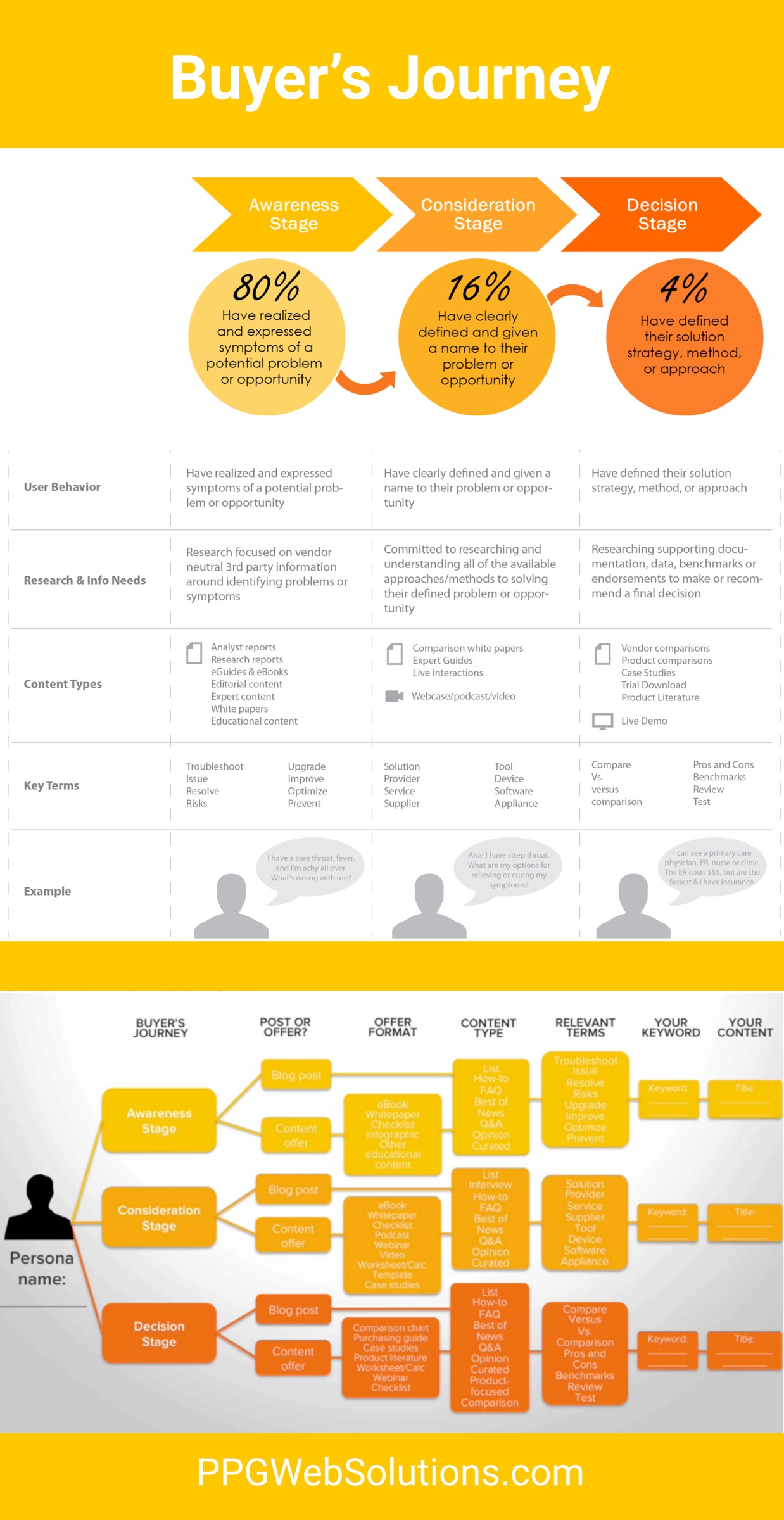
3. Writing Content that Converts
We’ve written a lot of articles about content that converts and we’ve referred to some great sources within this article. Content that converts visitors to leads isn’t something that just happens because you write. It happens when you follow the fundamentals of writing content that converts, followed by effective optimization and promotional steps.
Writing content that converts is worthy of a book or many articles that address all of the elements involved in conversion driven content and conversion-focused promotion. For the sake of convenience and comprehensiveness, we did write a detailed ebook centered entirely on how to write content that increases your website traffic, “25 Simple Steps to More Traffic, Leads & Sales.” It’s FREE!
Your Blog Content
The most foundational content is your blog post content on your website. Last year an analysis of web pages that held page one search engine positions had an average of 2000+ words and the content followed the suggestions provided in our eBook, “25 Simple Steps to More Traffic, Leads & Sales.”
Optimally, you should post 3 – 5 times per week. Depending on your industry, you may even need to post more frequently. Don’t be discouraged… I like to use the weight loss approach to this with my clients. If you aren’t yet posting once per week, then start there. If you haven’t been posting regularly, then a 2,000+ word post will be overwhelming. Start with a 500 – 750 word post. Go up incrementally in frequency and length. It’s not so hard to do once you have a rolling start.
And, while I said I wasn’t going into a lot of detail in this article, I think it is important to say that easy to read articles perform best in the search engines. We have lots of clients whose clients are very high-level, well educated clients. Therefore, they believe they should write blogs at the college level.
No you shouldn’t.
They won’t rank well.
Data and proven success approaches should guide you. Data and proven best practices all reveal that:
- You should write well.
- Match the voice, tone, rhythm of your target client.
- Use client jargon – not your corporate or industry jargon.
- Your articles should contain paragraphs that are 3 – 4 sentences long.
- Your sentences should be short.
- Your font should be large.
- You should never use stock photography.
- Use real-life images that convey your concept.
- Use highly relevant media in all posts
- Images
- Video
- Infographics
- Memes
- Gifs
- Use bulleted and numbered lists rather than long paragraphs.
- Make your content scannable.
- Include keywords, keyword phrases without over-stuffing.
- Include links to content that support your statements, facts or assertions.
- Write authoritative content other bloggers want to link to.
- Optimize your content professionally. Use best practice:
- on-page search engine optimization
- off-page search engine optimization
- Include a call-to-action at the end of every single piece of content.
- Promote your content on:
- Social media
- Forums
- Other blogs
- Search engine ads
- Social media ads
- Email marketing
- Promote within other company’s email marketing
Okay. I was really just going to give you a short list of why you shouldn’t write college-level content and I got carried away.
Your Content Offerings
Your content offers should be well written, leverage the best keywords for optimization and be structured so that they are easy to consume. They should be saved as PDFs and you should save them so that their file size is as small as possible while retaining image and text resolution quality.
Always place a branded cover page on your content. You’ll want to create 3D a cover image graphic you can use within your calls-to-action, blog posts, landing pages and emails to promote your offer. You’ll be surprised the increase in downloads when your offer has a professional look and feel to it.
It’s tempting to cut a few corners after investing all this time and work into producing the content. Don’t skip the small stuff. It makes a difference.

Video, Memes, Gifs and Quality Graphics
Video is powerful. It is search engine crack. Quality video, memes, gifs and graphics will make your content pop. It makes it easier to consume. If you aren’t very good at editing quality graphics for your content, use an intern, Fiverr.com, Freelance.com or a professional.
Use your images to help tell the story. They should add conceptual clarity or interest. Be sure your video is edited well and keep it short – no more than 3 minutes. A 2015 study showed that for YouTube and Facebook, the highest level of video engagements were for videos less than 1 minute.

Optimizing Your Content
Our pros have written several how-to posts to help you get an A+ for on-page optimization of your content and your webpage. If you are a do-it-yourselfer or a newbie, take a look at the following resources. Whatever you do, don’t skip the on-page optimization. Once your content is up, be sure to have your SEO professional include it in their off-site search engine optimization efforts.
- On-page: 2015 Highest Ranking Web Pages Leverage These Two Factors
- Rank Number 1 in Google – 3 Steps and Resources You Can Do Today
- Google’s Top SEO Ranking Factors: What Matters Most
- Seven Hacks to Improve Search Engine Rankings and Traffic to Your Blog
- SEO: A Beginners Guide
4. Landing Pages that Convert
This is a relatively easy task. Your landing page needs to be simple. Only one offer. You only want you buyer to be faced with one decision to make and that is to download your irresistible content offer.
Your landing page should not (read like this – will not) have your website’s navigation or its footer. Your landing page will only contain (the):
- Short paragraph about the value of the offer
- 5 or 6 bulleted statements of value or applied impact of the content
- Form field(s) for the email address – ask for as little information as is relevant for the buyer’s phase
- Call to Action
- Submit button
That’s it! That’s all.
Here’s an example of a high-performing landing page.
You could add your logo and phone number, but even that is too much in most cases.
Once your visitor clicks the submit button, they are taken to a confirmation page that provides a download button or information about how to get the offer if it is a webinar or something other than immediately available digital content.
You will also want your CRM or autoresponder email system to automatically send them an email with the link to download their offer.
A whole eBook can be written about creating an irresistible offer that converts your visitor to a lead and converts your leads to customers. In fact, we will be publishing that eBook on this subject in the very near future.
If you subscribe to our Blog (upper right sidebar on this page), we’ll send an email with a link to it as soon as it is released.
Here are some examples of the landing page styles that are said to be among the highest performing landing page styles. DISCLAIMER: the top three are PPGWebSolutions.com landing pages, however they use the landing page style of the top landing page performers.
5. The Call to Action
Awareness Phase. Typically, content offers that are developed for the Awareness phase require as little information from the visitor as possible. Most often, the only thing you should ask for is an email address. With each request for additional information you significantly decrease the number of visitors who will download your offer.
Remember, getting them to download your offer is the key. It’s how you convert them from visitor to lead. Once they become a lead, they are in your funnel and you can begin nurturing them through their buyer’s journey so you can convert them as into a customer.
Consideration Phase. The form fields for an offer in the Consideration phase may include the request for the lead’s first name, last name, and any other information that is necessary for marketing or sales to take their next step.
The key is to ask only for the information you absolutely need to continue moving them down the funnel. We have an Awareness phase offer for a free SEO, Inbound Marketing and Competitive Analysis. This offer also attracts buyers in the Consideration phase.
In this particular case, we have to ask for multiple types of information in order to produce and deliver the comprehensive report we are offering. Therefore, the information request is justified and seems less opportunistic and intrusive.
6. Managing New Leads
Your content and offers should be irresistible and should help nurture your leads through each phase. In addition to your landing pages, once a visitor submits a form with their information in exchange for your download offer, they should automatically be placed in your customer relationship management system (CRM).
If they are a lead (already in your CRM) and they request another offer, your CRM should be setup to begin sending nurturing emails that are precisely relevant to the phase that lead is now in.
7. The Conversion
Once your visitor submits their form field information, they become a lead or in the case of a lead who submits a request for a download offer that addresses the Consideration or Decision phase, they are converting and transitioning further down your marketing funnel.
Each specific action your buyer takes on your website should trigger a pre-defined response from your marketing team. Certain website activities should trigger you to move the lead from the marketing team to your sales team. This should be defined once you begin to officially manage the activity of your traffic.
Once a lead begins to download certain Consideration or Decision phase offers, or visit your about page or your pricing page, you should consider reaching out to them directly.
8. Email Marketing and Nurturing Sequences
A smart CRM (like HubSpot’s), is able to be programmed to send out specific email nurturing systems for the specific phase your prospect is in. It will update their lead status (triggering a new email sequence) as they move through your marketing funnel and their buyer’s journey. Of course, you will program the email nurturing systems into your CRM (ie specific email content, specific offers within the emails and the sequence of the emails).
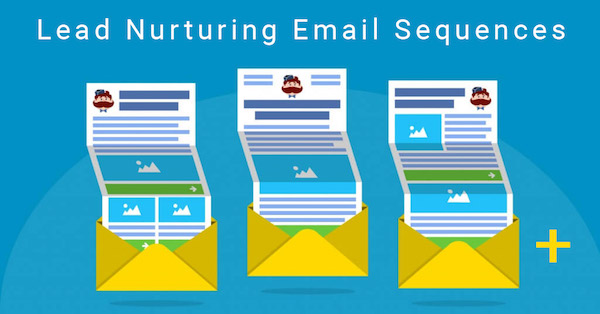
9. Transitioning Leads from the Marketing Team to the Sales Team
The ultimate goal, is to move your buyer through the decision phase and convert them to a customer. At a predetermined point along the way, you or your marketing team will pass the lead from a marketing status to a sales status; at which point, your sales team will reach out to them personally.
10. The Marketing Funnel
Within the entire journey, at every level of the funnel, your inbound marketing strategy (personalized engagement and high-value content) has been delighting your leads and converting them to loyal promoters and brand ambassadors.
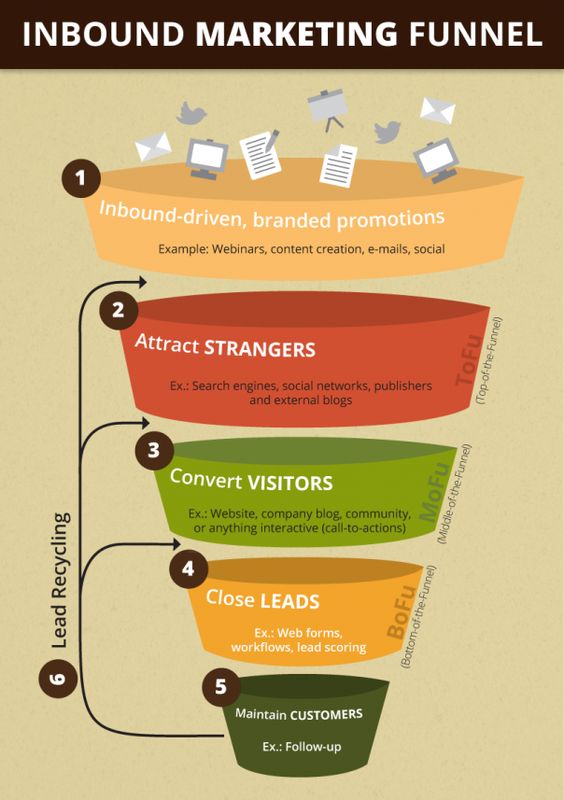
The top of the marketing funnel, is the widest part as it reflects the goal of driving targeted traffic to your website. As you nurture your visitors and prospects down the funnel, each consecutive level is narrower than the one before it. Fewer and fewer leads transcend each next-level. Map your campaigns to the funnel. This will help you determine when your “marketing-team qualified leads” become “sales-team qualified leads.”
11. Measuring Success, Leveraging Data for Higher Results
Your team should be measuring the success of each campaign and each element of the campaign. The data that emerges daily, weekly and monthly will guide you in making changes that will yield higher and higher returns.
12. Promoting Your Content and Landing Pages – Driving Traffic to Your Website
It’s probably pretty obvious that if you build it, you have to promote it for them to come.
During your buyer persona research, you learned detailed information about where your buyer “hangs out” on the web. As a result of your research, you’ve identified:
- the social platforms they use
- the forums they visit
- where they go to find answers to their business challenges and even the associations to which they belong
Your research has helped you develop a deeper understanding of your buyer’s:
- life
- goals
- experience
- skills
- preferences
- needs
- wants
- challenges
- obstacles
- successes
- habits
With this intimate understanding of your buyer, you will know exactly where to promote your blog posts, offers and content. You’ll know where to guest blog, which forums to participate in and what social channels to leverage.
The basic channels for promotion include:
- Search engine optimization – on-page and off-site
- Posts and boosts on social media channels your buyer frequents
- PPC / Ads on relevant social media platforms and search engines
- Email marketing
- Posting and contributing in forums your buyer frequents
Search Engine Optimization
Don’t believe it when you hear that simply writing great content and completing the on-page technical optimization requirements is enough to get you first page ranking. You can be certain an SEO expert did not tell you that.
If you want your content to get great ranking results, you are going to need to work with or execute best practice SEO requirements. The search engines are constantly updating and modifying their algorithms. What was required six months ago to achieve top rankings, may not be working today. Each year Google updates their algorithm 500 – 600 times.
Here is a list of SEO articles that will help you understand the ins and outs of SEO. If you are a do-it-yourselfer, you’ll be able to get a good start with the information we have provided.
- On-page: 2015 Highest Ranking Web Pages Leverage These Two Factors
- Rank Number 1 in Google – 3 Steps and Resources You Can Do Today
- Google’s Top SEO Ranking Factors: What Matters Most
- Seven Hacks to Improve Search Engine Rankings and Traffic to Your Blog
- SEO: A Beginners Guide
Social Media
Start with the 1 – 3 social platforms where your buyer hangs out most regularly. Create compelling posts and memes that promote your offer. As crazy as it sounds, make about ⅔ of your posts non-promotional inspiring memes and content that is useful to your buyer’s business needs (content that is not about your solution).
Less than one-third of your posts can be educational and informative resources that are about your solution. These would be memes, beautiful images and/or videos that promote your offer, your blog post and your solutions. Take a look at what your competition is posting and see what levels of engagement they are receiving from their audience. When your competition is doing something that is garnering lots of engagement, create a strategy that is similar (but unique to your brand) and see how it works for you.
Have a post you want to drive a lot of eyeballs to? Boost it. Using what you know about your buyer persona, choose the proper demographics and daily budget and you are ready to rock. You can make your daily or monthly budget as low or high as you choose. Start small and experiment. Study the resulting data. Make some tweaks and do it again. Repeat.
Do some A/B testing with your posts. Make only one minor change in each round of testing so you know what it was that worked or didn’t.
PPC Ads
Ready to promote your offer, blog and landing pages? You can do sponsored ads on any of the major social platforms. You’ll obviously want to use the channels you buyer frequents. Facebook works really well for most audiences. Google’s Adwords is easy and effective – although a little more expensive. We’ve learned that for some of our smaller businesses, Facebook garners more results with less investment.
Don’t buy the most expensive keywords. Use the buyer’s thought phrases and question phrases that you developed in the Buyer’s Journey template. If you have finished the Buyer’s Journey development process, you’ve completed your keyword analysis and have a vetted list of potentially high-performing keyword phrases. Long-tail phrases are significantly less expensive and highly effective.
Email Marketing
In addition to having your visitor sign up to receive emails with your most recent blog posts, include compelling offers and calls-to-action within them to increase traffic to your landing pages, blogs and offers. Email marketing is very effective.
Only send emails to people who have opted in to your lists. These people have given you permission to email them and look forward to receiving information that helps them succeed in their business and personal lives. Never SPAM. Even your best friend will not be happy to be SPAMmed by you.
Forums and Off-site Posting and Blogging
Last, but not least, create content you can post in the forums your buyer persona frequents. Link to your offers, blog posts and landing pages – appropriately. Be willing to answer questions within relevant forums. Do not be advertorial. Offer your expertise and provide resources, but do not promote your business or solution. Most forums allow you to create a bio and a signature line. Adding your website hyperlink is all you need to do.
Getting Your First Campaign Launched
Ready to get started? Take these 12 steps and map out time on your calendar for each one of them. I’ve provided them for you in priority order. Your first campaign is going to be the hardest. It will take the longest and it will likely provide the least benefits of any future campaign. But, there has to be a first campaign.
Every campaign after it gets easier and more profitable. I promise!
So let’s get started.
Use this list to create a timeline you can stick to:
- Develop your first buyer persona
- Conduct the Content Audit
- Map Your Content to the Buyer’s Journey
- Identify the thoughts your buyer is having in each phase and conduct your keyword phrase analysis
- Map Your Content
- Identify and develop your offer
- Write your first blog post (it will be educational and around the subject of your offer)
- Optimize your content
- Develop your landing page, visitor information form and call-to-action
- Setup Your Email Nurturing Sequences
- Promote Your Content
Before your begin your first campaign, download these complimentary guides and templates so you can get started with your first campaign:
Inbound Marketing Template Bundle – Everything you need to get started
25 Simple Steps to Increasing Traffic, Leads and Sales eBook
Need some help? Give us a call. We can give you advice, support you with parts of it or manage the entire process for you!


